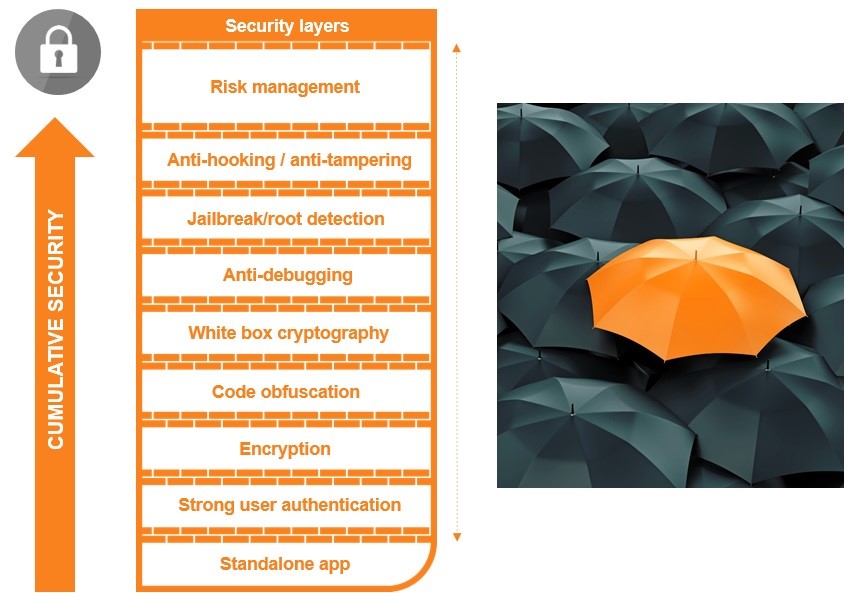Mobile devices are central to our everyday lives. Not only do we use them to communicate, but they’re increasingly becoming a vital channel for banking, payments and even our digital identities.. However, it’s crucial we get the security solutions right if consumers are to trust all these stakeholders in the mobile ecosystem.
As consumers have access to an unprecedented number of valuable services through their smartphones, both for personal and professional use, they increasingly become targets for cybercriminals.
Fortunately, there are ways to increase trust in mobile security. Here are five ways we can build trust among users.
1. Robust in-built and dynamic app security

Recent research shows 80% of users value reliability and security above convenience, speed or reward, so it’s clear there’s widespread awareness of the importance of security in a mobile experience. Yet companies, banks, enterprises, manufacturers and governments need to better secure their mobile ecosystem. We need to provide ways for apps to defend themselves against dynamic malware, reacting to cyberthreats while in the field, in addition to in-built security for instance from OEMs and browsers.
2. Make users feel secure

The psychology of security also needs to be considered. If an organization’s mobile experience doesn’t feel secure or show it’s taking security seriously, customers are unlikely to increase their amount of transactions. While security solutions must function in practice, mobile apps must also display how trustworthy they are at the same time. Apps must be visually appealing and demonstrate that everything is operating as intended or display some kind of distinct authoritative symbol.
3. Provide great user experience

Having a complex and robust security solution is all very well, but if it affects the user experience, then customers are likely to be turned off. Without convenience, mobile services won’t be adopted, even if they believe the app to be secure. One way of balancing security and ease of use is biometric authentication, which we’ve discussed previously on the blog. However, these solutions must be extremely responsive to work properly. Unnecessary repeated checks could undermine the impact of biometric authentication, so it’s vital the technology is capable of recognizing patterns and providing additional tolerances.
In addition, biometric authentication must work regardless of the mobile device and operating system – inconsistency in user experience could result in a loss of consumer trust.
4. Layered security

It’s not enough to invest in a single security mechanism for a mobile device or app. Several layers of protection should be implemented, considering the psychology of security along the way. Users need to see and understand that additional security features are a necessary component of the mobile experience. Depending on what is at stake, multiple security layers can be added. What this means is that app providers must do their research and think about likely audiences and the service their apps deliver. For instance, if your app is providing mobile banking, then the level of authentication needs to be very high.
5. Flexible risk management
Effective risk management is paramount when developing an app or alternative mobile service. Providers need to be conscious of the dynamic nature of cyber threats – unfortunately, they are constantly evolving and increasingly unpredictable. A flexible risk management system is therefore necessary, responding to new situations and implementing adaptable security policies.
Dynamic risk management systems can identify unusual user transaction patterns, evaluate the risks of a transaction and intervene to stop it, as well as asking the users to further verify themselves. These techniques are a component of the layered security approach and. crucially help defend against unknown new viruses (zero-day attacks) , as they’re able to detect suspicious behavior.
As you can see, there are several ways that key players in the mobile system can increase consumer trust. By investing in the right technologies, we can design apps with the tools to defend against dynamic cyber threats while in the field. You can find out more about how to build trust with consumers through mobile software security by reading our eBook.
You can also check our brand new videos, explaining how mobile software security works, click on the image below:
And if you have any thoughts or questions, let us know in the comment section below or tweet to us at @GemaltoMobile.





